Window coverings

Table of Contents
Home Journey - This article is part of a series.
For many years we did not have any window coverings. We didn’t want to detract from the architecture… and it seemed too hard. But cold wears you down.
Curtains #
My partner made these dramatic curtains. I love how they puddle, like a theatre curtain. They are a calico fabric, and linen backing. The slope is only 6 or 7 degrees, so there is no issue of the curtains sliding down.
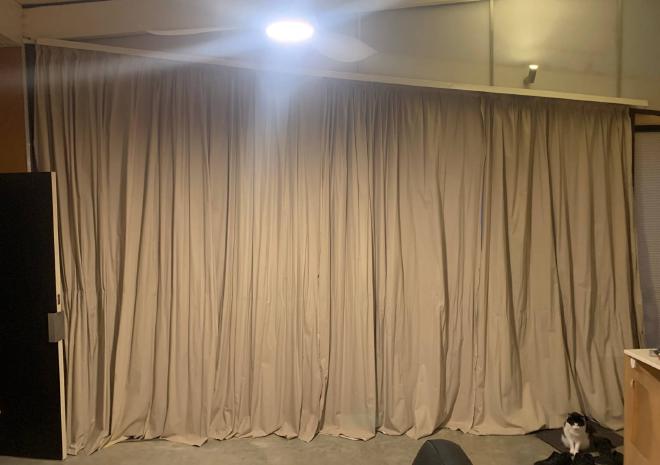
The Family room curtains are in two parts which draw to the left and right. Velcro is used to hold them together in the middle when closed.
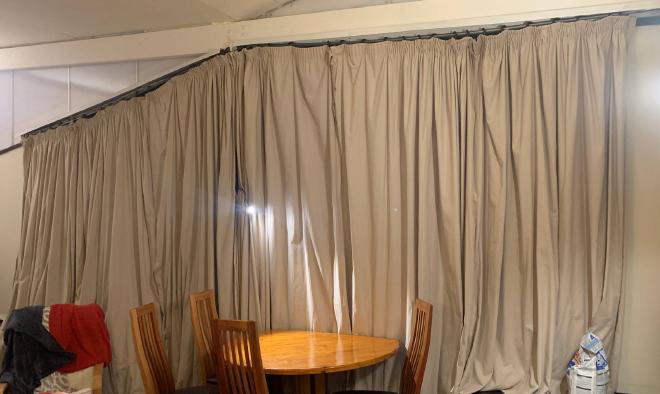
To take it to the next level, I found an insulating material, Insul-bright metallised polyester. This became the inner layer of a curtain in the study.
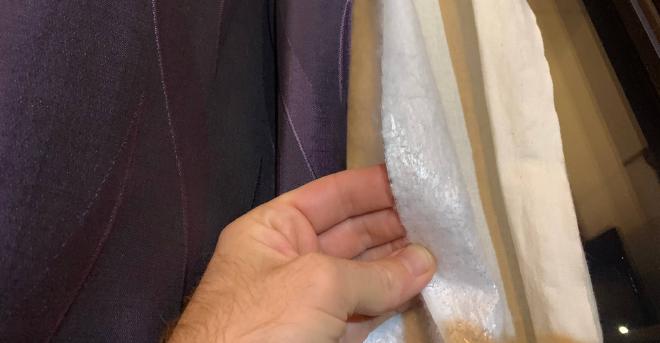
I made some cheap & cheerful DIY pelmets from PVC flashing.
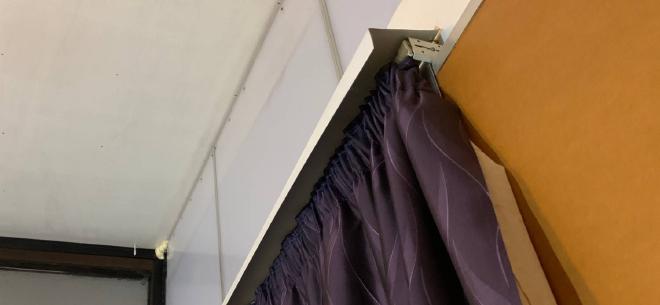
Magnetic seals #
Our doors never seem to be fully draught sealed no matter what I do to them. So to reduce the impact on winter nights we made curtains that could seal closed with magnetic tape. (Yes, the same magnetic tape used for acrylic secondary glazing.) The original adhesive seemed to work quite well, but when it started coming off I glued it on with Liquid Nails.
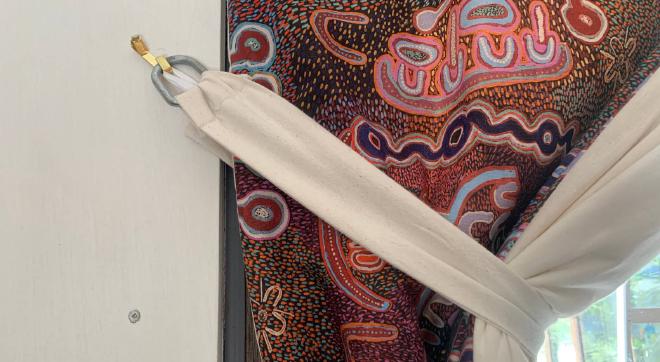
At the top, we mounted these curtains flush against the wall.
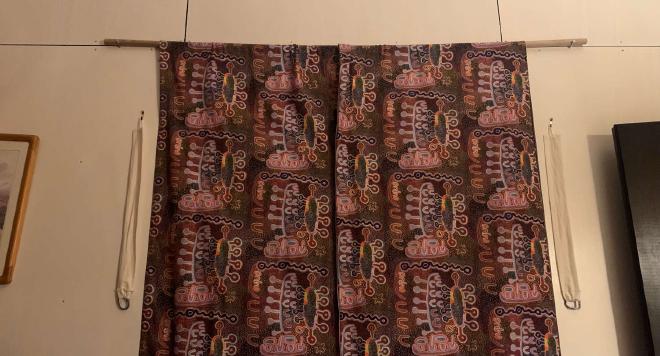
As well as sealing to the frame, the two halves seal together in the middle.

Blinds #
For some other windows we had honeycomb (cellular) blinds professionally installed. These have a reputation for good thermal performance because they are close-fitting and have airgaps inside.
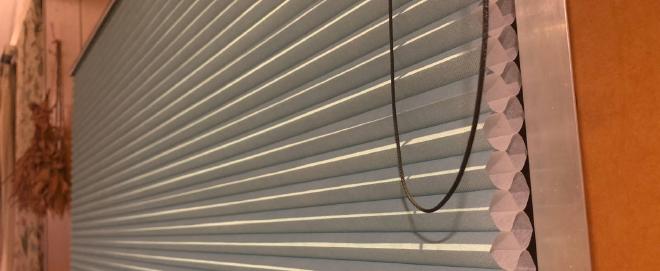
This window is not rectangular so I had to make a shim.
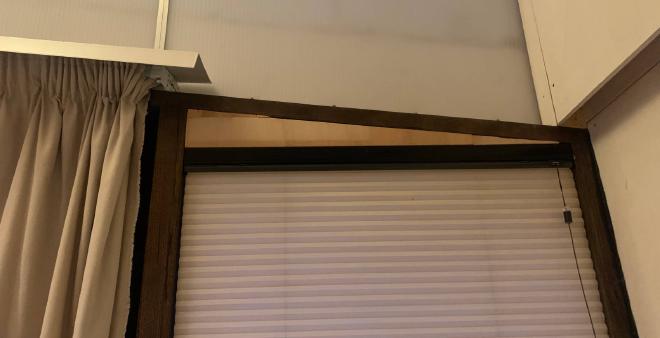
These ones in the Family room are high so need super long draw cords.
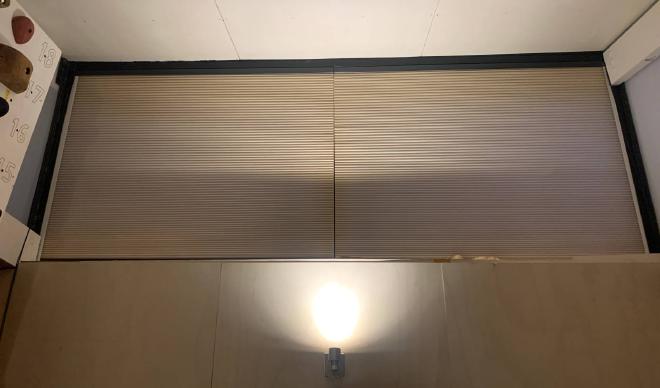
Conclusions #
Window coverings are nice for reducing heat loss on winter nights and just give a sense of cosy security.
The Insul-bright metallised polyester curtain in the study seems to be very effective. My work desk is right next to it. On hot summer days it provides immediate relief.
